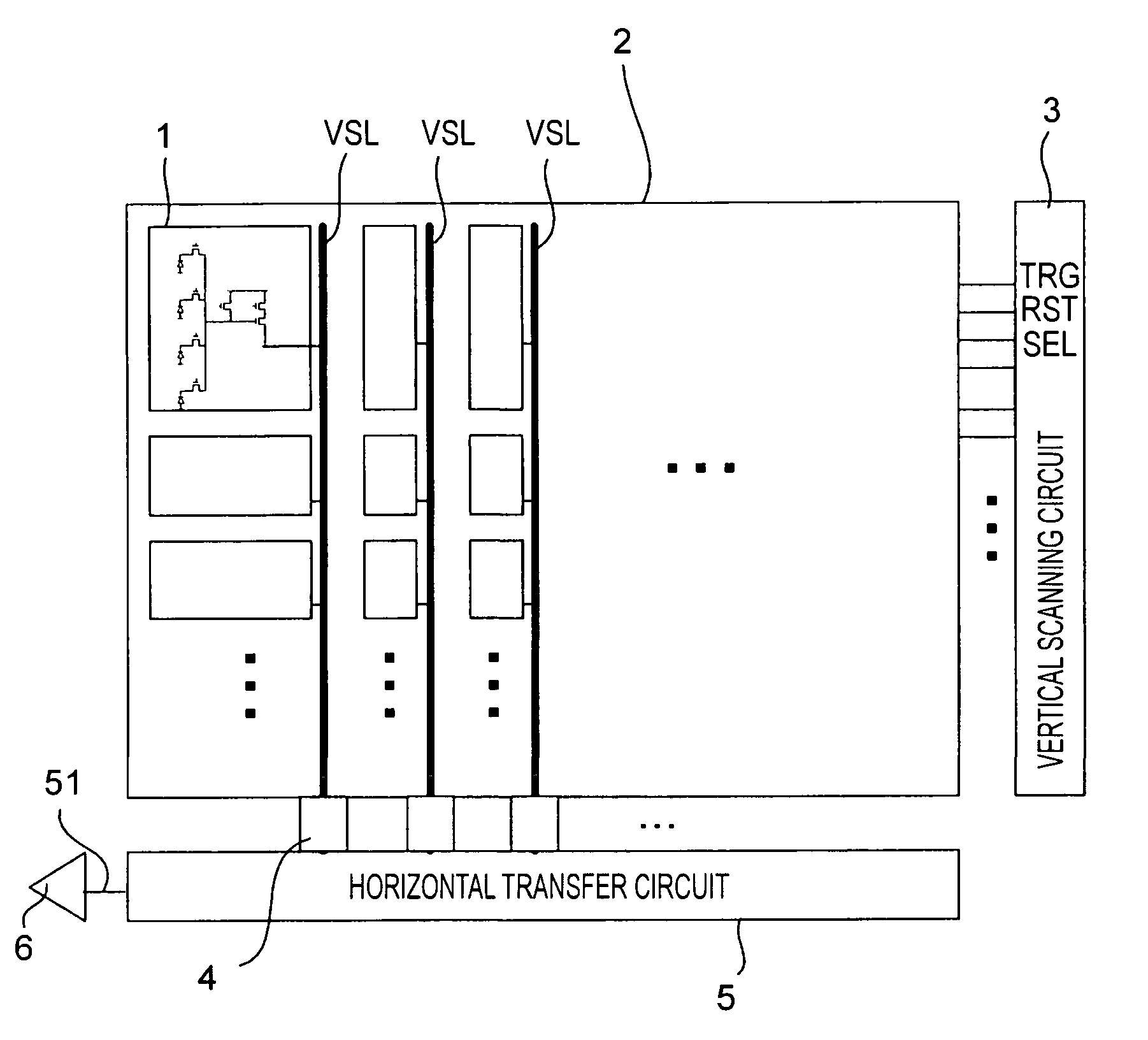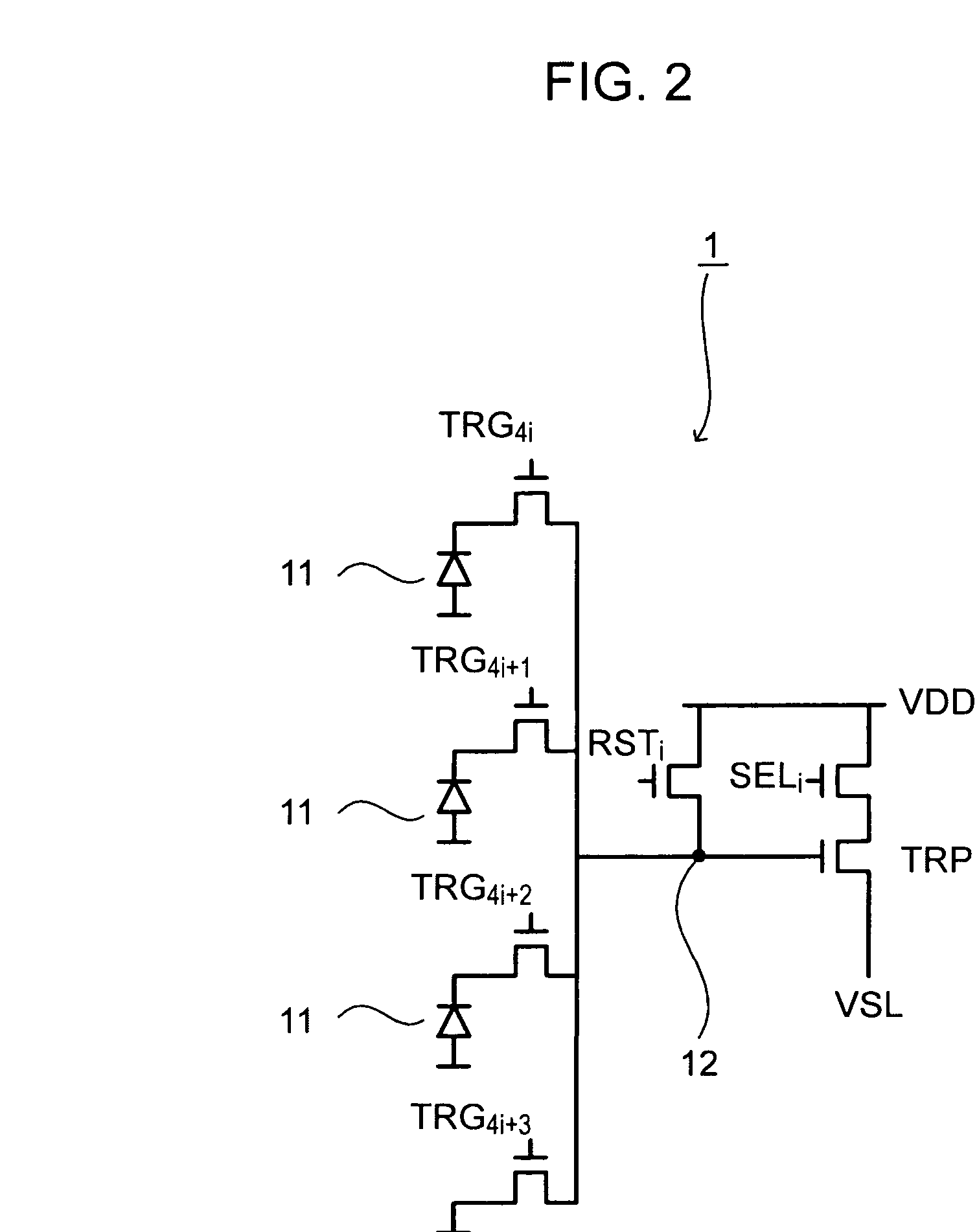Solid-state imaging device and method for driving the same
a technology of solid-state imaging and driving mode, which is applied in the scanning details of television systems, picture signal generators, and the scanning of television systems. it can solve the problems of low flexibility of operation and degradation of processing image quality
- Summary
- Abstract
- Description
- Claims
- Application Information
AI Technical Summary
Benefits of technology
Problems solved by technology
Method used
Image
Examples
first embodiment
[0035]FIGS. 3A and 3B are conceptual diagrams illustrating a technique in a known art and a first embodiment of the present invention, respectively. Virtual pixel centers, which are obtained by mixing two pixels of an identical color when pixels corresponding to G (green) and B (blue) are alternatively arranged in a column, are illustrated in these figures. FIG. 3A illustrates an addition operation according to the known art. Since two pixel signals, each from a single pixel of the identical color, are simply added and averaged, pitches between the centers of each pair of the adjacent virtual pixels G′ and B′ after addition are not equal.
[0036] In contrast, FIG. 3B illustrates an addition operation according to the first embodiment of the present invention. The pitches between the centers of each pair of the adjacent virtuals G′ and B′ after addition can be equalized by setting a specific value of addition ratio between the input signals in an analog signal processing. In other wor...
second embodiment
[0043] In the first embodiment, an addition operation is performed in the sampling portion in a CDS circuit. However, for an image sensor configured to have a FD portion shared between pixel cells, a charge-addition operation in the FD portion is more advantageous for high sensitivity and operational speed. In this case, addition and averaging operations for signal processing similar to those described in the first embodiment can be achieved, by adjusting an exposure time on each pixel intended for an addition operation, as shown in FIG. 7.
[0044] Specifically, a vertical scanning circuit 3 performs a control operation, so that the time interval between ON periods (exposure time) of a transfer transistor TRG_a of a first pixel intended for an addition operation may be set to be the normal exposure time, and the time interval between ON periods of a transistor TRG_b of a second pixel intended for the addition operation may be set to be one-third shorter than that of TRG_a. This yield...
third embodiment
[0046] Embodiments of the present invention may also be applicable to other signal readout configurations than the CDS circuit. For example, a signal processing technique can likewise be achieved even when a column circuit having an analog-to-digital converter (ADC) is provided for each column. For a comparison circuit in the ADC, differential circuits whose sizes i.e., amplification factors, are different from each other, e.g., Standard Size and ⅓ Size, may be connected in parallel as shown in FIG. 8. Further, it becomes possible to switch between various output resolution modes by changing the connections of a plurality of differential circuits of various sizes appropriately.
PUM
 Login to View More
Login to View More Abstract
Description
Claims
Application Information
 Login to View More
Login to View More - R&D
- Intellectual Property
- Life Sciences
- Materials
- Tech Scout
- Unparalleled Data Quality
- Higher Quality Content
- 60% Fewer Hallucinations
Browse by: Latest US Patents, China's latest patents, Technical Efficacy Thesaurus, Application Domain, Technology Topic, Popular Technical Reports.
© 2025 PatSnap. All rights reserved.Legal|Privacy policy|Modern Slavery Act Transparency Statement|Sitemap|About US| Contact US: help@patsnap.com



